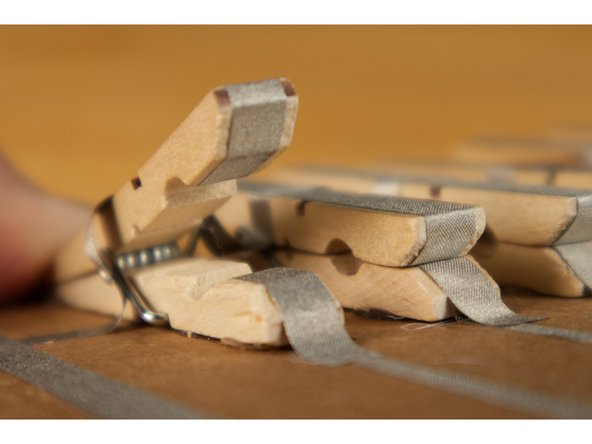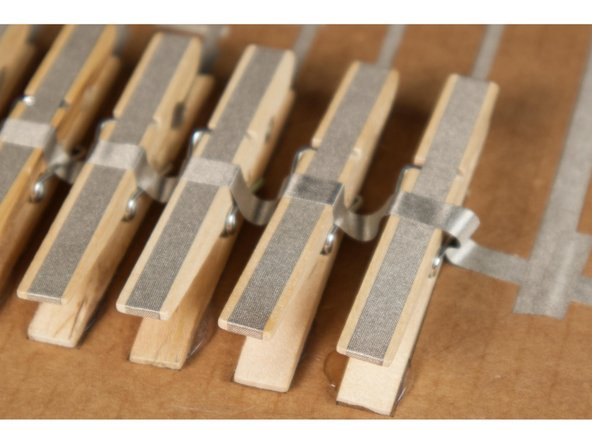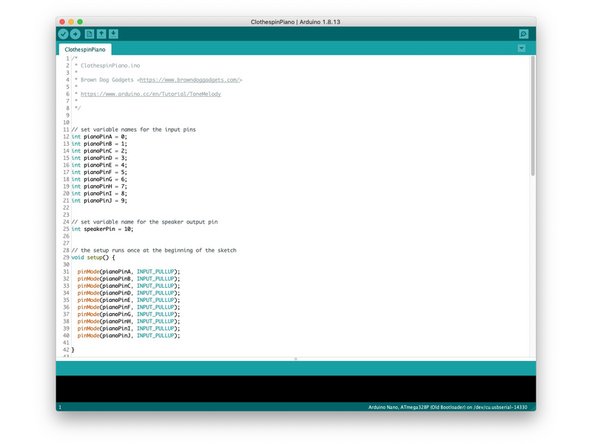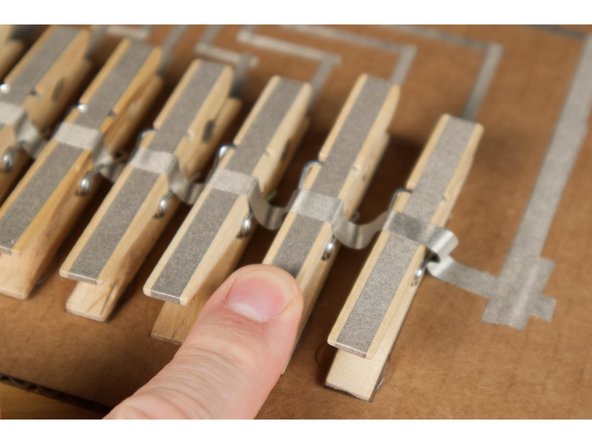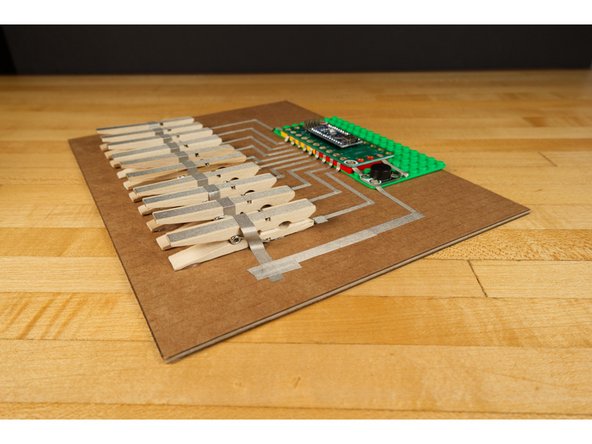Introduction
Make a piano using clothespins for the keys and our Robotics Board to play sound.
Video Overview
Featured Document
-
-
The diagram shows what our Clothespin Piano layout looks like. You'll want to make sure you have enough room to attach your clothespins, Maker Tape, and a small LEGO baseplate with the Robotics Board.
-
You should be able to fit the whole thing on a letter size piece of material. (We used cardboard, but wood or cardstock could also work.)
-
We've provided an additional PDF that can help with doing the layout. It can be printed on paper or cardstock.
-
Our clothespins were 10mm x 72mm in size, so if yours are different you may need to adjust things.
-
Hey! Does this guide look familiar? We have another Clothespin Piano that uses our Bit Board and micro:bit. Check it out if you're interested: Clothespin Piano with Bit Board & micro:bit.
-
-
-
Build your circuit with the Robotics Board and Piezo Speaker on top of a LEGO baseplate. You'll need a few small pieces to raise the board up on the edges.
-
Use 1/8" Maker Tape to run from the connections to the surface of your board.
-
Remember, Make Tape is conductive on the top and bottom (and all the way through!) so if you have to overlap it, that's okay... it will still work fine.
-
-
-
Attach the clothespins to the board in a row. Hot glue works well to hold them down.
-
Hot glue is hot! Be careful when using hot glue. You could use tape, but the clothespins tend to shift around when pressing down on them, so hot glue holds them in place much better.
-
-
-
Add 1/4" Maker Tape to the top and bottom pieces of each clothespin. The top pieces will all connect to ground, and the bottom pieces will each connect to a pin on the Robotics Board.
-
We recommend 1/4" Maker Tape for the clothespins so there is more surface area to make contact. You could use 1/8" if needed, but you would want to use multiple pieces for a wider area of contact.
-
Connect the 1/4" pieces with the 1/8" pieces to complete all of your connections.
-
Our clothespins will act as "Normally Closed" switches, which means we're going to reverse the logic in our code so that when a switch is "on" no note is played, and when a switch is "off" a note will be played.
-
-
-
Run one long piece of Maker Tape across the top of the clothespins to the ground connection on the right side.
-
Leave some slack in the tape between each clothespin and after the last one to allow for the tape to move when the clothespin opens and closes.
-
-
-
If you've never used our Robotics Board before you'll need to read the user guide and install the correct software and drivers.
-
Download the Arduino sketch: https://github.com/BrownDogGadgets/Crazy...
-
Plug the Robotics Board into your computer using a USB cable.
-
Launch your Arduino software and open the ClothespinPiano.ino sketch.
-
Upload the code to the Robotics Board.
-
-
-
Plug in a USB cable for power and play a tune!
-
Is a clothespin closer to a "real" piano key than a pushbutton is? Can you press more than one key at a time? What sound do you get if you do?
-
Do you like Pianos? Check out our Simple Touch Piano. our Conductive Paint Piano, and our Working Piano Necktie for more piano fun!
-
Cancel: I did not complete this guide.
One other person completed this guide.







